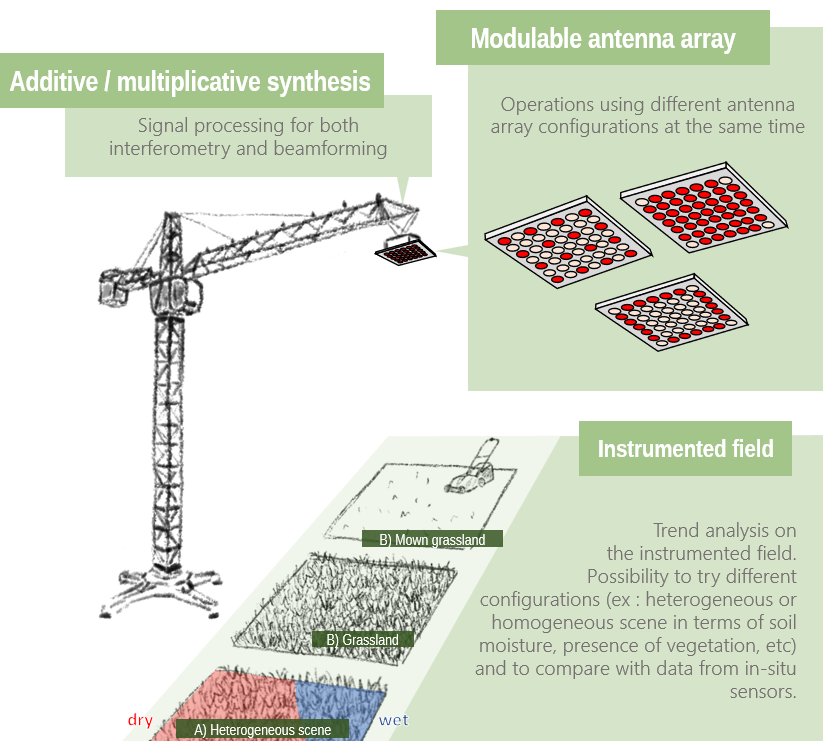
CNES R&T proposal for the Flexible ANTenna Array for Synthesis Imaging in Observational Radiometry has been validated ! Behind the acronym stands the construction of an all-in-one hyper-modulable L-band radiometer based on an antenna array. The instrument will carry out aperture synthesis in two ways : interferometry and beamforming (depending on the combination of the signals kept by each elementary antenna : multiplying them 2 by 2 or summing them all together, respectively). Combining these two paradigms will be easy to explore, depending on the geometrical configuration of the array.
After operating in an anechoic chamber, the radiometer will be placed on an instrumented site, where its soil moisture measurements would be easily compared with those of in-situ sensors.

Scientific and technical objectives:
– To demonstrate that beamforming can be used for synthetic aperture imaging (as SMOS does with interferometry). A priori, aperture synthesis should be better, but the model will make it possible to prove it (or not) with real, non-simulated data.
– To perform trend analyses and study optimal configurations (by playing with the paradigm of aperture synthesis, the resolution and the sensitivity of the antenna array). This project falls within the framework of Earth observation imaging (with the constraints that it imposes), but the general principles may be of interest to other fields: telecommunications, radar, radio astronomy, etc.
– To study the same scene with different characteristics, in order to understand – among other things – how the different components of an heterogeneous pixel are contributing to the signal received by the antenna array (A), or how the vegetation cover is taken into account when estimating the soil moisture (B) …
